Enchanter’s Nightshade (Circaea canadensis), also called Broadleaf Enchanter’s Nightshade, is a small but eye-catching perennial that blooms in early to mid-summer along forest trails. Where I live and play in central New Jersey and Pennsylvania, that means late June through mid-July.
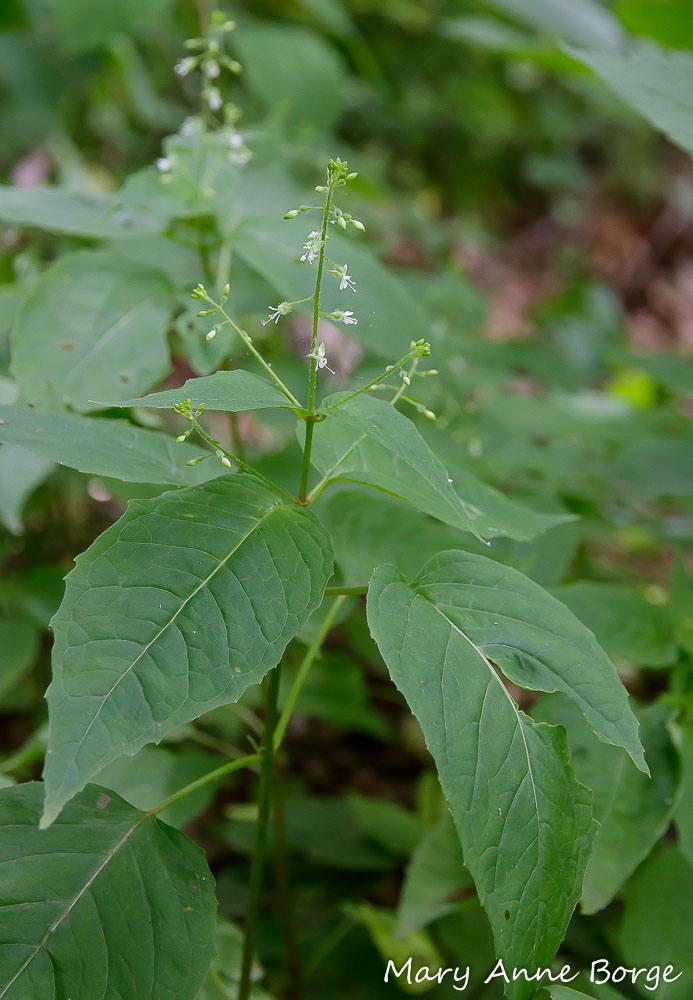
This diminutive resident of the forest floor has several pairs of leaves opposite each other along the stem, with a cluster of tiny flowers rising above them. It often grows to about a foot (.4 m), but can reach as much as two feet (.7 m) in height, including the flower cluster (infloresence). The tiny white flowers are only about an eighth of an inch (4 mm) in diameter, and yet in the dim light of summer in the woods they are attention-grabbing, for both humans and pollinators.
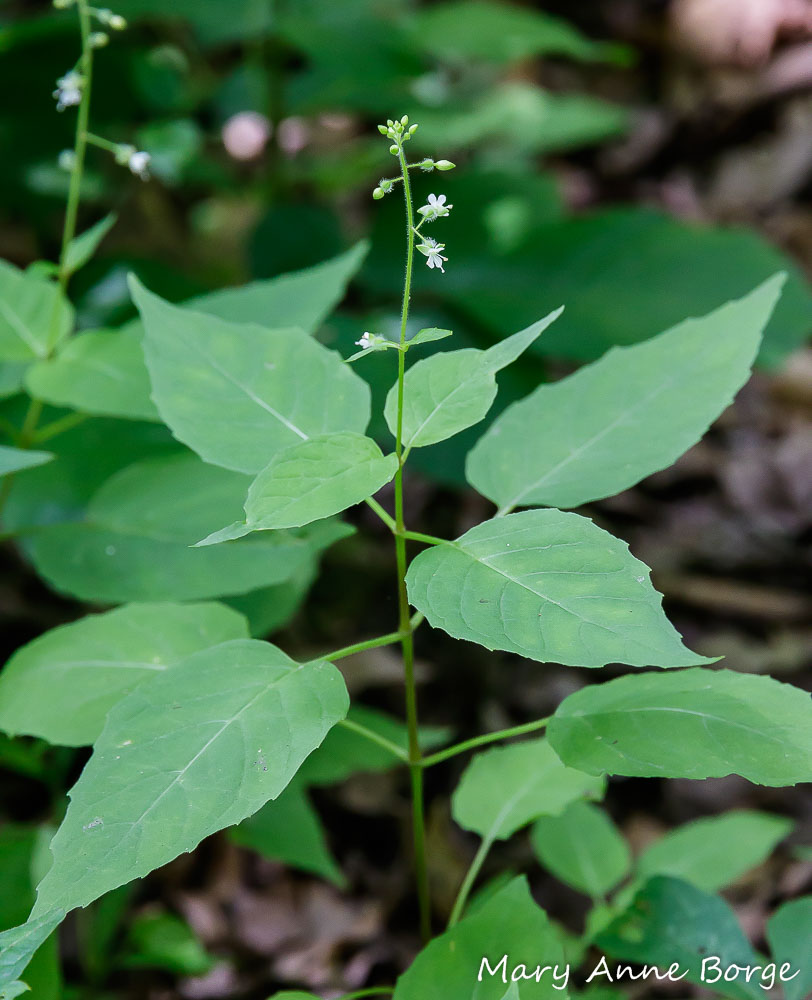
Each flower has two deeply lobed white petals that look a little like mouse ears, backed by two green, wing-shaped sepals that protected the flower before it opened. Two stamens, the male reproductive parts, reach out like arms from each side at the center of the flower, the anthers at their tips resembling mittened hands. The long narrow structure projecting from the very center of the flower is the pistil, the female reproductive part. The circular washer-shaped tissue at the base of the pistil is the source of the flower’s nectar, which is offered to entice pollinators to visit.
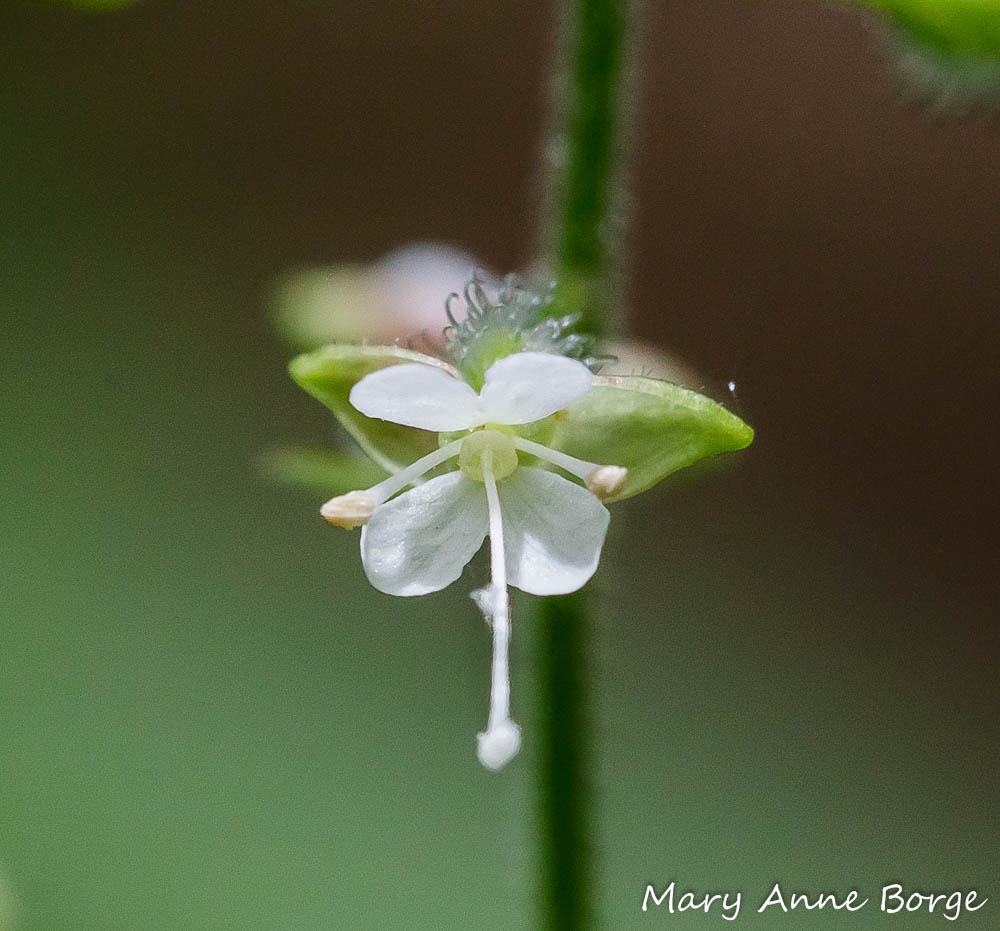
In profile it’s easy to see the veining on the flower’s petals. They are nectar guides, directing pollinators to a potential reward inside. The stigma reaches out beyond the petals, ready to accept incoming pollen on the stigma at its tip, positioned to be the first thing a pollinator encounters when visiting. The flower’s ovary, covered in hooked hairs, is visible behind the sepals. If pollination is successful, this will ripen to become a small burr-like fruit.
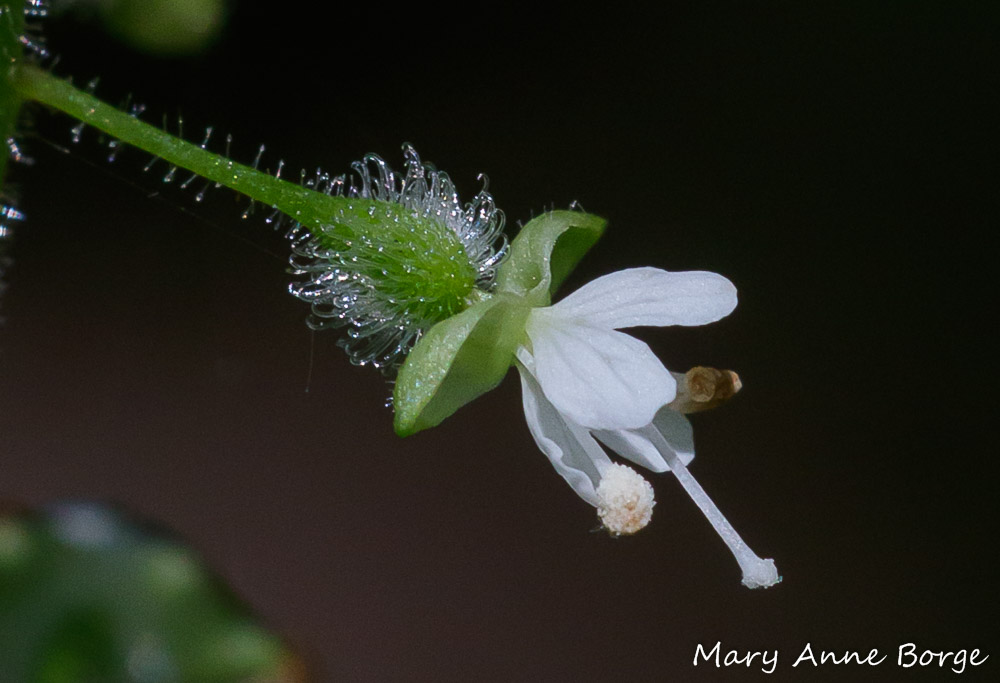
The stems of the entire inflorescence are covered with glandular hairs. Hairs on plant tissue usually serve to discourage herbivores from eating the plant, and glandular hairs often have the added benefit of emitting a chemical offense to enhance the deterrent effect.
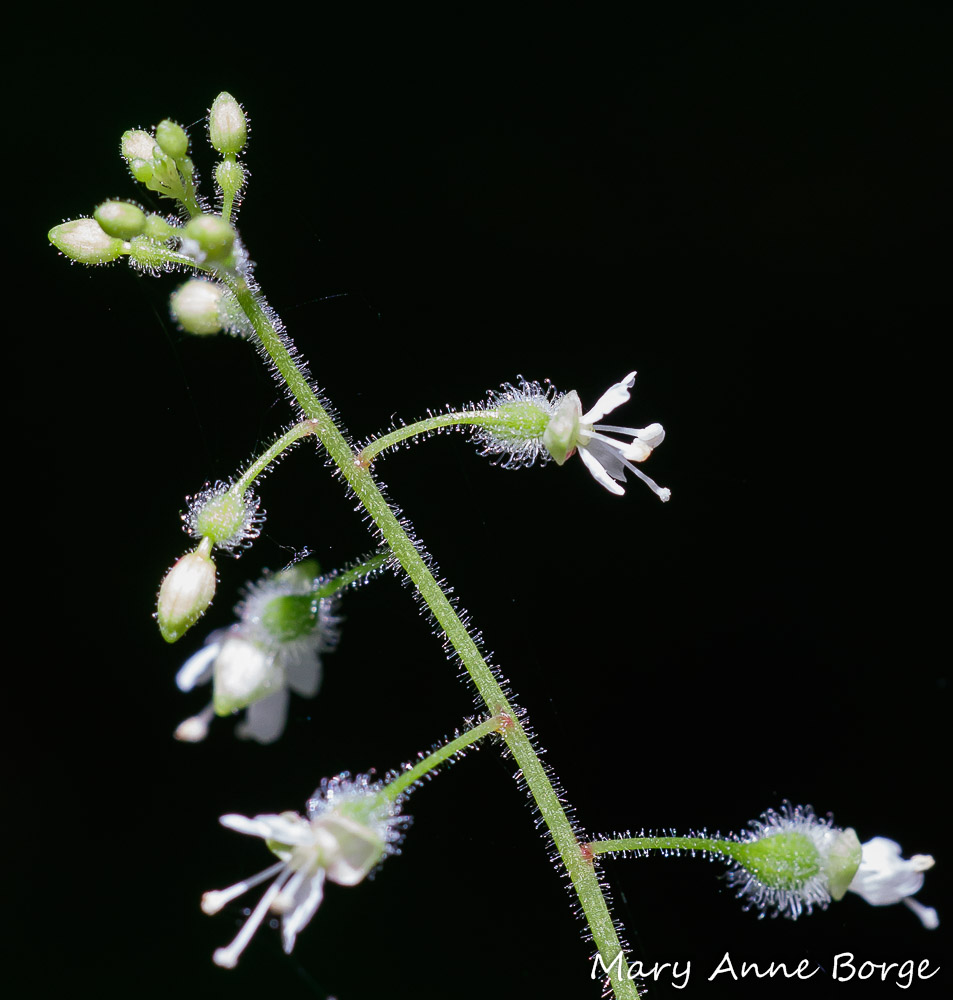
Even such tiny flowers have pollinators who are perfectly matched for them, primarily sweat bees (Halictidae) in the genus Lasioglossum and tiny flower flies, most commonly of the species Toxomerous geminatus. The group of bees called sweat bees get this common name from their habit of obtaining nutrients by licking up human sweat.
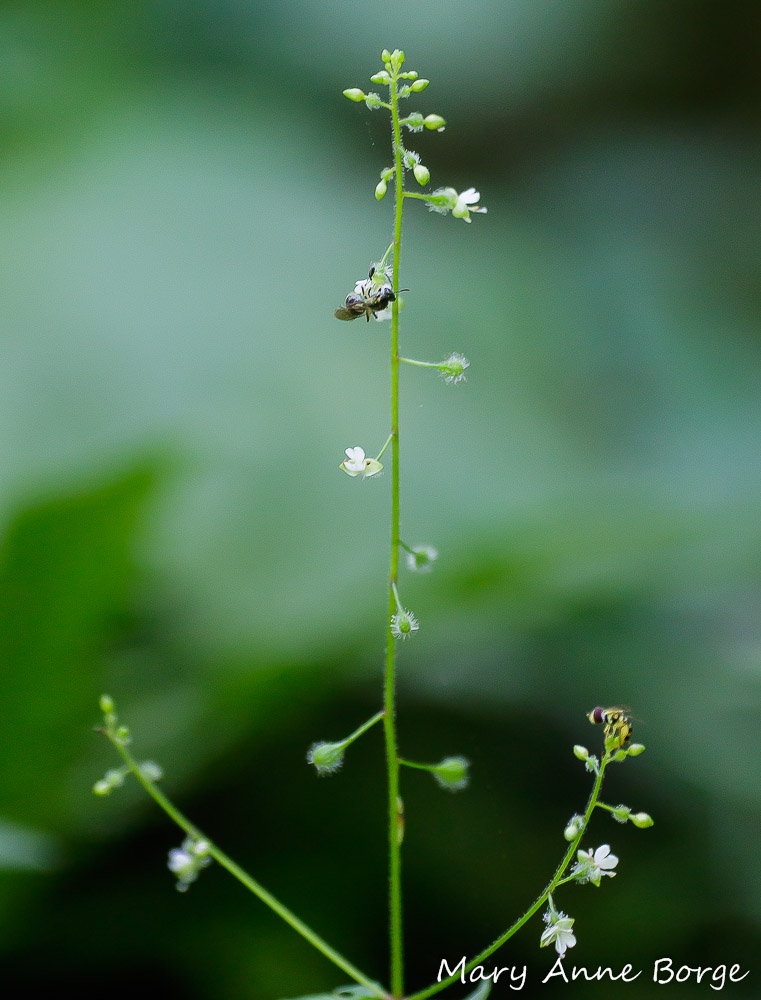
The bees visit the flowers for both nectar and pollen. The little sweat bee in the photo below is feeding herself, but also gathering pollen, visible on her hind legs, to bring back to her nest for her larvae.

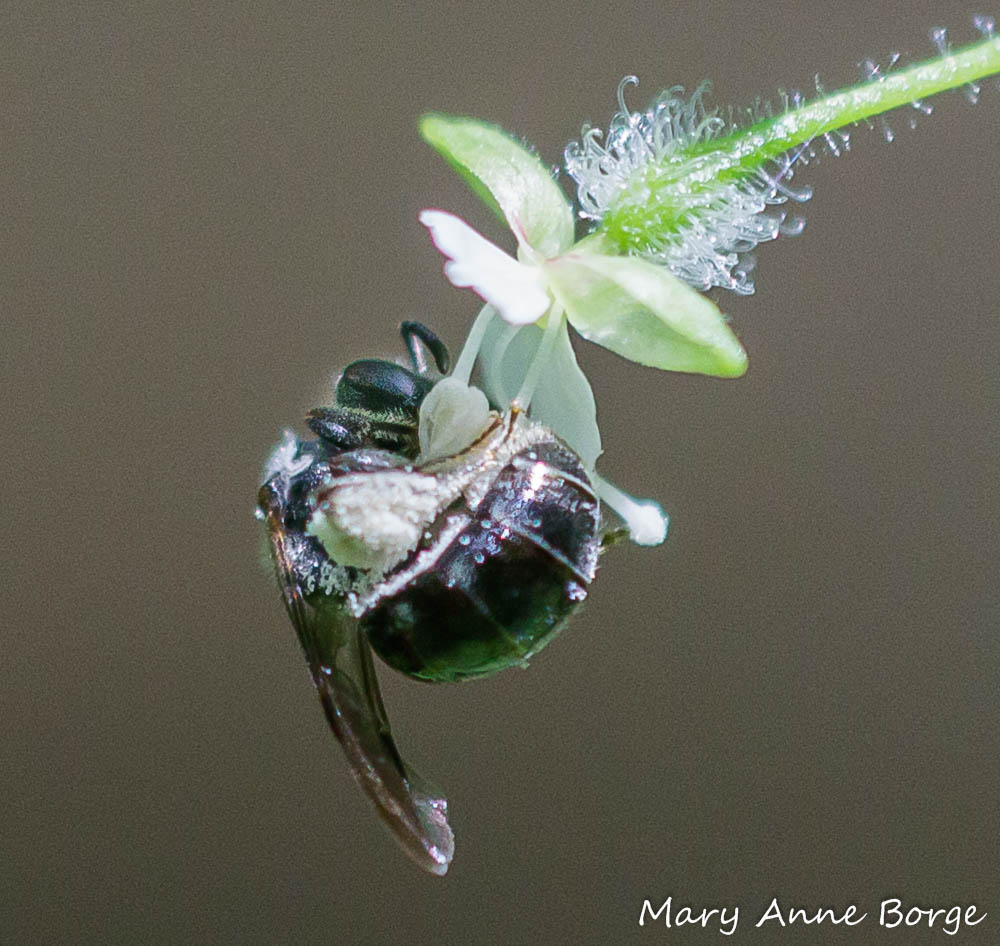
On several occasions, I have watched small swarms of tiny flower flies hovering around Enchanter’s Nightshade flowers. ‘Hover fly’ is another common name for this group of insects, because of their ability to perform this maneuver. Any individual I was able to see well enough to identify was a Toxomerous geminatus.
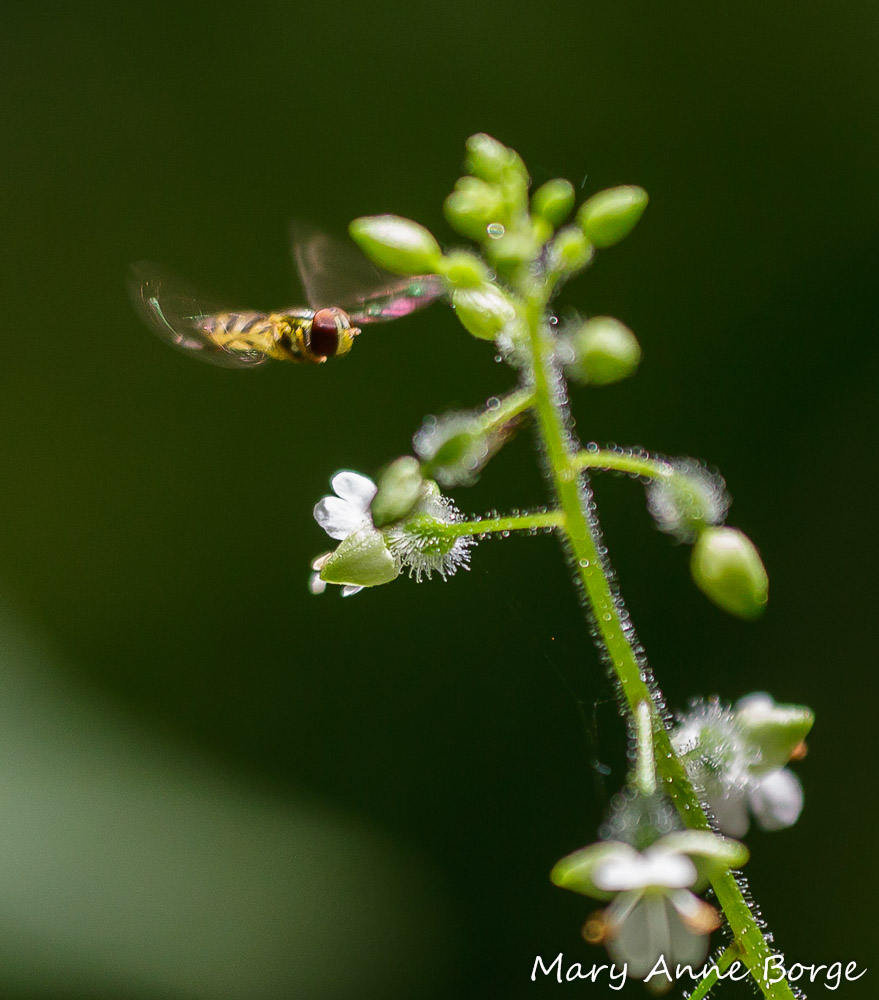
Like the bees, the flies visit the flowers for both nectar and pollen, both of which are important food sources for them.
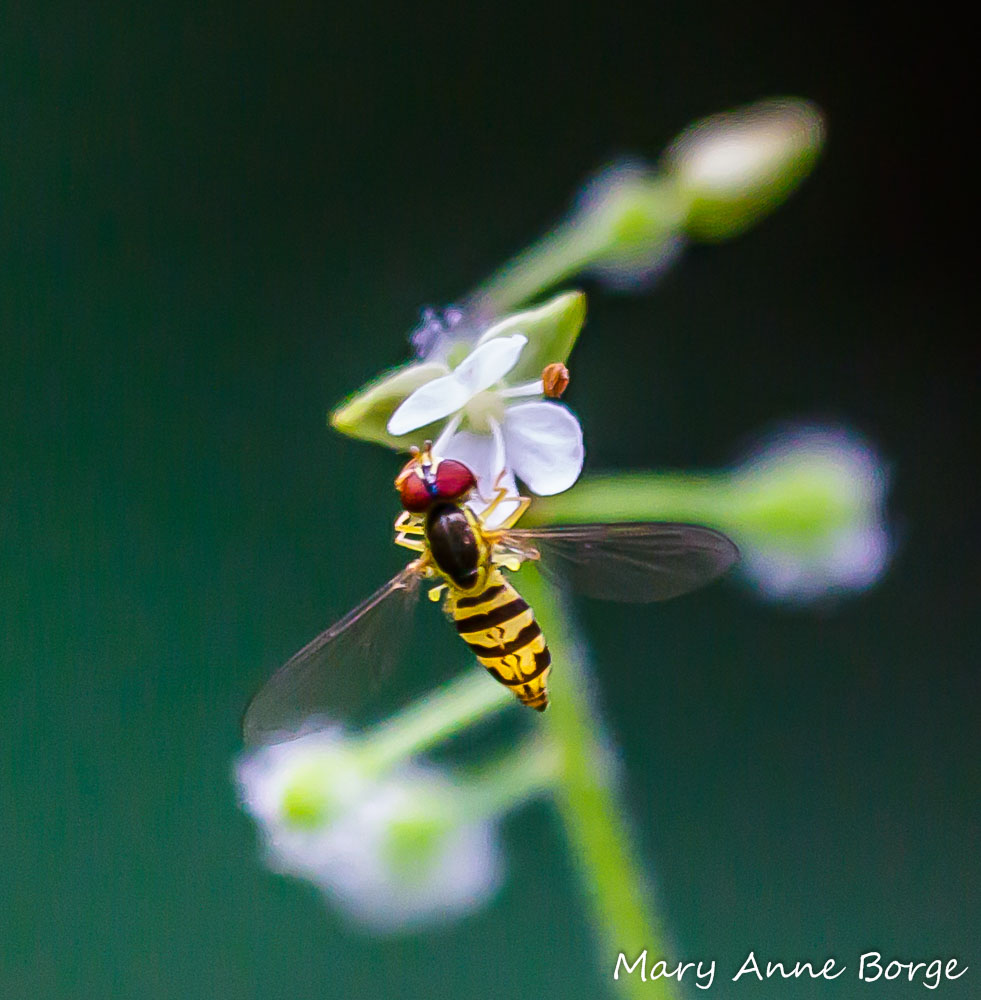

After pollination, the flower’s petals, sepals, stamens and pistils wither and fall away, leaving the ovary to ripen to a fruit.

As the ovary matures to a fruit, the hooked hairs covering the fruit stiffen, becoming an effective mechanism to grab on to the fur or pants of a passing animal who then unknowingly helps to disperse the seeds.

Enchanter’s Nightshade also has the ability to reproduce through its underground parts, sending up additional shoots to form colonies.
Why the name Enchanter’s Nightshade? The Greek goddess and accomplished enchantress Circe reportedly often used potions and herbs to achieve her ends, sometimes turning enemies into other animal species. Plants in this genus, Circaea, were thought to be among the ingredients she used, so were named for her. So far, unfortunately, I haven’t found any of her recipes.
Enchanter’s Nightshade can be found along forest trails in the United States from Maine west to North Dakota, south as far as Oklahoma, Louisiana, and Georgia, and in Canada from Quebec and Nova Scotia west to Manitoba.
Take a cooling summer walk in the woods to look for Enchanter’s Nightshade and its pollinators.
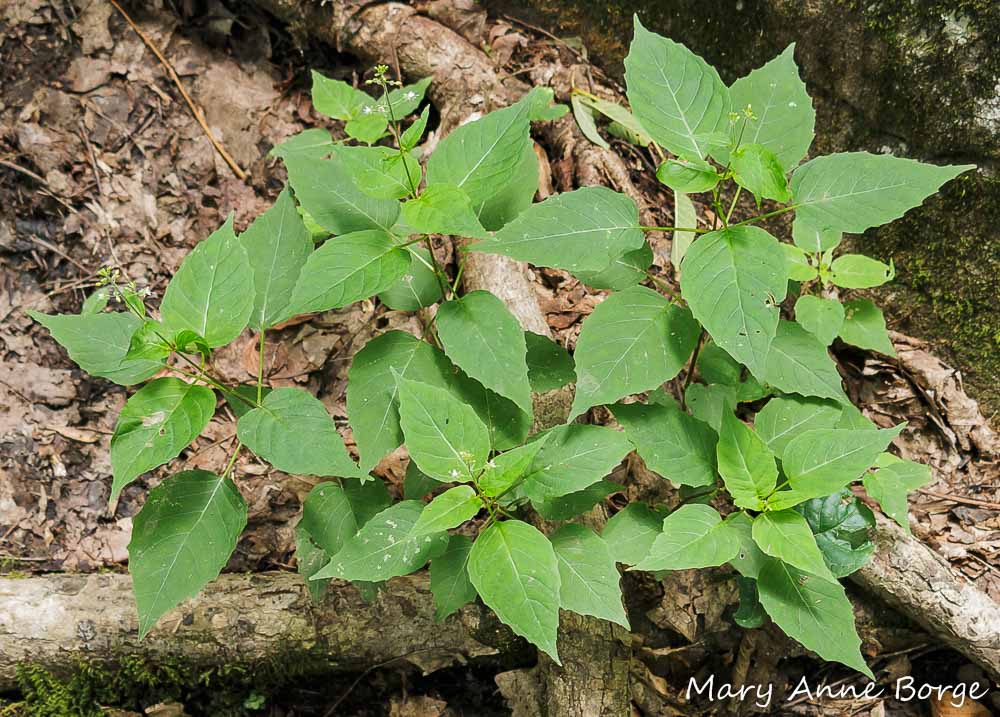
Note: Some sources refer to this species as Circaea lutetiana, Circaea lutetiana L. ssp. canadensis, or Circaea quadrisulcata.
Resources
Global Biodiversity Information Facility (GBIF)
Minnesota Wildflowers, copy and paste: https://www.minnesotawildflowers.info/flower/enchanters-nightshade
Niering, William A. The Audubon Field Guide to North American Wildflowers, Eastern Region. 1979.

Hi Maryann,
Thanks for your helpful photos and descriptions. I suddenly have this all over my garden this summer and am wondering if I should pull or let go? Thoughts? My toddler grandchild leaves with me, so I am concerned about any toxicity.
SRM
Hi Sandy, Unless your grandchild likes to put plants in their mouth, it should be safe to leave it.
Mary Ann
I’ve a photo equipment question. What lenses do you find most useful when photographing pollinators on plants? I’ve tried a couple of micro lenses but often find my long lenses allow for distance and are more forgiving. Maybe this is simply reflects my background which leans photo journalistic.
I split my time between SW Florida where I’m responsible for a half acre butterfly garden and Western Massachusets, where I’m just becoming familiar with pollinators and their plants.
Looking forward to your NABA aster Zoom call. Astors are important to us in both FL & MA!
Good attitude! Asters (and pollinators) are important to us everywhere. For pollinator pics, I mostly use a Sigma 180mm macro lens that I’ve had for about 20 years. It allows me to take close up style images from a few feet away if necessary, so I don’t spook my subjects. In low light situations I sometimes use a wide angle Canon EF-S 15-85mm lens that has image stabilization. It’s more forgiving in low light, and is good if I want to get more of the plant on which a critter is posing. My camera body is a Canon Rebel, which is not full frame, so it enhances the close up effect. I also crop images to just what I want to see, using Lightroom. Hope that helps.
Dear Maryanne,
After seven or eight years of your suggestions, Tim and I have a going concern here in Levittown. We have a functional native garden and the plants are reproducing themselves and spreading a bit. It is so thrilling to count the number of pollinators on each plant.
We are very grateful to you for sharing your knowledge in the blogs and your classes at the preserve. Following your blogs has been a most enjoyable past time.
We will keep planting in your honor.
Yours in the spicebush, Patricia and Tim
Thank you, Patricia and Tim! I couldn’t ask for a better honor.
Mary Anne, Thank you so much for this wonderful post and the stunning photos. Just yesterday I saw this flower in the woods for the first time, and identified it last night at home. Then just today I caught up with your blog post! Serendipity, and joy. Your post made me appreciate its beauty and complexity even more.
I’m so glad you’ve met Enchanter’s Nightshade!
One of the few unassuming flowers I remember, because the common name is so charming. And they do get a bit bold in your garden if you let them. Thank you for reminding me of their beauty.
Nice to hear from you, Mary! How is Arizona?
I find this species and its smaller cousin Alpine Enchanter’s Nightshade (Circaea alpina) here in Baileys Harbor WI. C. alpina seems to be the more common of the two here.
I have yet to see (or maybe notice?) C. alpina!
These are growing around my front porch nestled in among some boxwood and spruce. Was wondering what they were but never got around to looking them up. Thanks.
I’m glad the post was helpful!
Hi Maryanne,
Same as Bernie, I know this plant but didn’t realize the special features you pointed us to. I love the photos of the bees and the hairy flower parts. Fascinating. Heading out soon to check them out with the respect they deserve. Thanks as ever.
Hi Patricia, It’s a cool little plant! Enjoy your hunt for it.
Thank you Mary Anne for another wonderfully interesting and educational blog post. Your spectacular photos are a treat and a lesson in themselves, as they always capture the essence of your written blog.
Cheers,
Michael O’Brien
Thank you, Michael! I like to have the photos tell the story.
Mary Anne, thanks bunches for your post. This is a flower that I’m a tiny bit familiar with but have (in the past) chosen to not give it much attention. Thank you for opening my eyes. Interesting descriptions to read, and your photos are lovely. Bren
Thanks, Bren! It’s amazing what’s out there when you stop to look. I’ve noticed this plant for years, but I finally decided it was time to give it a closer look!
Thanks for showing me a small world I’ve never seen. Great photos!
Thanks, Cathy! I’m glad you enjoyed it.
Capturing great photos of objects the size of Enchanter Nightshade flowers and fruits is incredibly demanding. Doing so in the field is even more difficult. Doing so in a forest increases that difficulty exponentially. Capturing excellent images of insects on the wing visiting those forest flowers demands a level of difficulty that is frankly incalculable. I’m awed by this blog.
Thank you, Joe!
Thank you for this great article and the amazing photography!!!
Glad you enjoyed it, Deedee!
Beautiful!
Thank you!